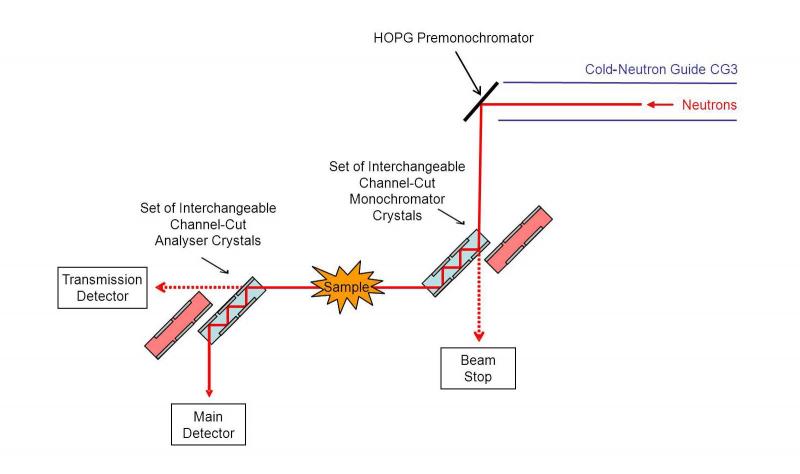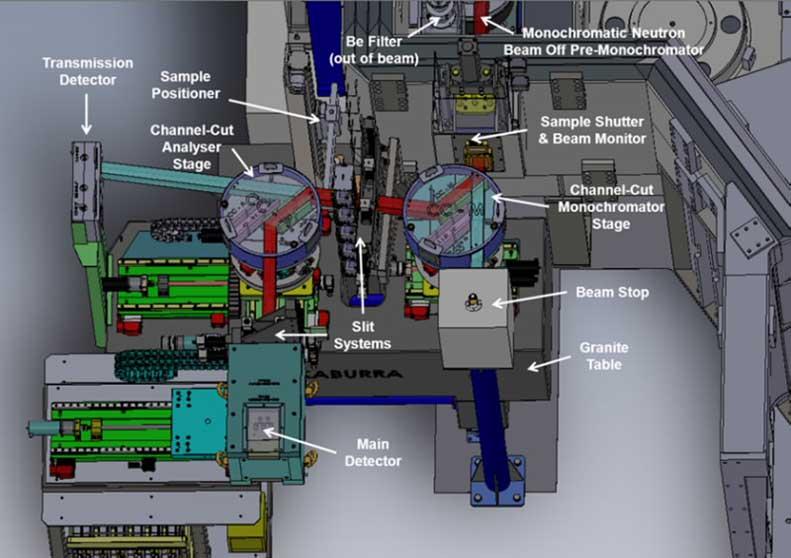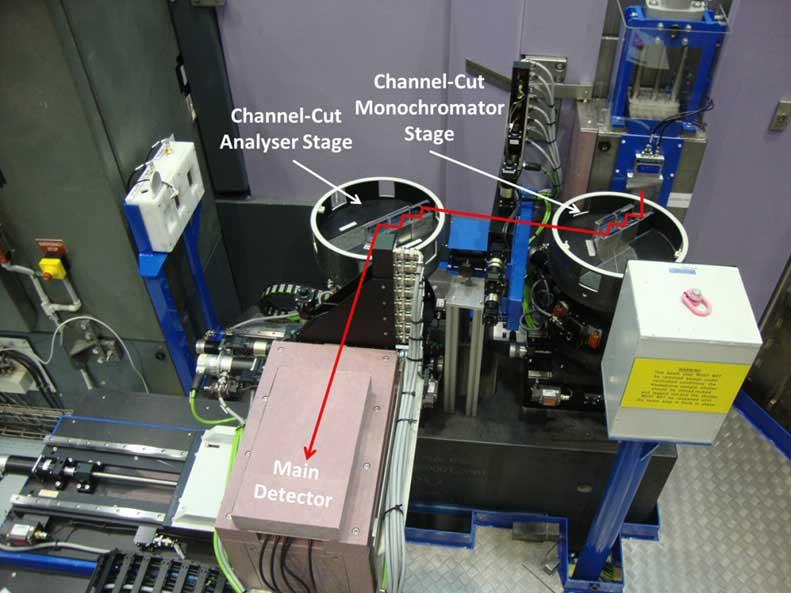

Technical information - Kookaburra
Specifications
- Beam line: CG3 (cold neutrons)
- Position: Upstream of PLATYPUS reflectometer
- Estimated peak beam flux at sample: øB = 190,000 n cm-2 s-1 for λSi(111) = 4.74 Å and øB = 23,000 n cm-2 s-1 for λSi(311) = 2.37 Å
- Solid source angle: ΔΩSource = 8.3·10-7 sr
- Premonochromator: Highly-oriented pyrolytic graphite (HOPG) at a fixed Bragg angle of θBragg = 45°
- Wavelengths: λSi(111) = 4.74 Å at θBragg = 49.1° and λSi(311) = 2.37 Å at θBragg = 46.4° to accommodate for weakly and strongly scattering samples
- Wavelength resolution: Δλ/λ = 4%
- Monochromator and analyser channel-cut perfect crystals: Si(111) and Si(311), interchangeable
- Minimum momentum transfer: qmin = 2.78·10-5 Å-1 for λSi(111) = 4.74 Å and qmin = 1.43·10-5 Å-1 for λSi(311) = 2.37 Å
Instrument layout

USANS extends the Q-range of SANS to smaller Q values using a neutron beam with an extremely sharp angular profile which can be obtained by diffraction from a perfect crystal. The central parts of a USANS instrument are two channel-cut perfect Si single crystals (labelled monochromator and analyser) mounted on an optical bench. The monochromator crystal defines the beam that illuminates the sample, and imposes a strong correlation between scattering angles and wavelengths. Therefore, the USANS technique can use a relatively wide range of wavelength/scattering angle combinations simultaneously, which drastically enhances the flux on sample without sacrifying the Q-resolution.
During the experiment the measured scattering angle, or momentum transfer Q, is determined by rotation of the analyser crystal at which data are collected at one value of Q at a time. When a sample is inserted between these two components, small-angle scattering spreads the highly collimated beam, and this broadening is exhibited in the difference between the two rocking curves of the analyser, with and without sample.
As premonochromator we use a highly-oriented pyrolytic graphite (HOPG) crystal which delivers two different wavelengths λSi(111) = 4.74 Å and λSi(311) = 2.37 Å to the instrument. With one sample position equipped with two interchangeable sets of channel-cut crystals, Si(111) and Si(311), allowing individual operation at different wavelengths we will be able to optimally accommodate weakly and strongly scattering samples.


Instrument Cabin Phone 9717 3352
Instrument Enclosure Phone 9717 7468
Instrument reference for publication
Rehm, C.; Campo, L. d.; Brûlé, A.; Darmann, F.; Bartsch, F.; Berry, A., Design and performance of the variable-wavelength Bonse–Hart ultra-small-angle neutron scattering diffractometer KOOKABURRA at ANSTO. Journal of Applied Crystallography 2018, 51 (1), 1-8.